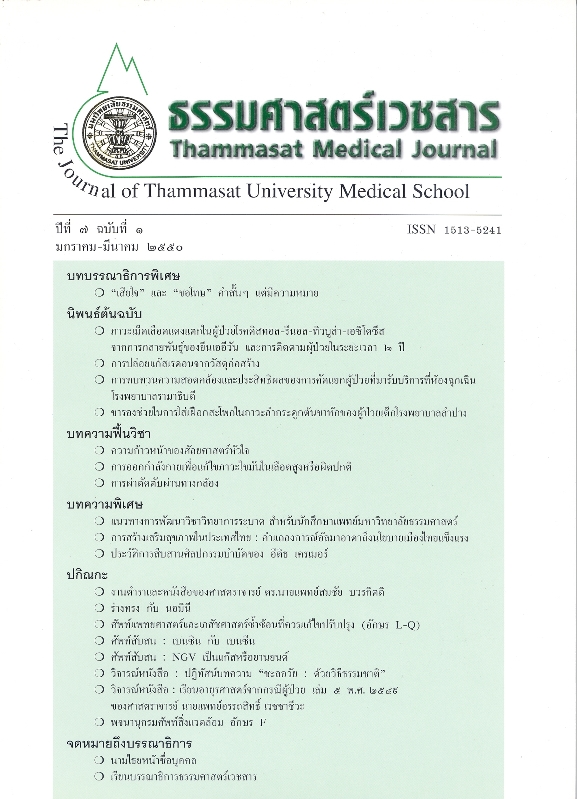Digenic Inheritance of Anion Exchanger 1 (SLC4A1) and Human Alpha Globin (HBA) Mutation Results in Distal Renal Tubular Acidosis and Hemolytic Anemia in a Thai Patient
Abstract
Background: Mutations of SLC4A1 gene encoding anion (Cl-/HCO3-) exchanger 1 (AE1) are responsible for majority of distal renal tubular acidosis (dRTA) in Thailand where thalassemias and hemoglobinopathies are also prevalent. It is possible that mutations in both genes may interact with each other and result in modification of hematologic phenotypes of the thalassemic patients and carriers.
Objective: To investigate AE1 and alpha-globin gene mutations in patients with dRTA concomittent with anemia and hepatosplenomegaly
Methods: A patients with dRTA and anemia with hepatosplenomegly was examined by automated CBC, peripheral blood smear analysis, osmotic fragility test, hemoglobin typing, and serum iron study. Mutations of α- globin genes causing α- thalassemia were characterized by using standard method. AE1 mutations were screened by using polymerase chain reaction and single-strand conformation polymorphism (PCR-SSCP), PCR and restriction digestion, and direct sequencing.
Results: A 9-year-old boy who manifested classical phenotypes of dRTA including hypokalemicmetabolic acidosis and failure to thrive was found to have anemia (Hct 30%), mild anisopoikilosis (RDW 18%), macrocytosis (mean corpuscular volume (MCV) of 89.5 pg), stomatocytosis, decreasedred cell osmotic fragility, normal hemoglobin typing (Hb A 96% and A2 3%), and normal iron study (serum ferritin 107 ng/mL). The mutational analyses demonstrated a single α-globingene deletion (-α3.7/αα), and compound heterozygous AE1 mutations, a 27-bp deletion in exon11 and missense mutation in exon 17, designated as SAO/G701D
.Conclusion: The co-existence of heterozygous α-thalassemia (-α3.7/αα) and compound heterozygous SAO/G701D mutations of AE1 gene results in hemolytic anemia and hepatosplenomegaly in a dRTA patient.



